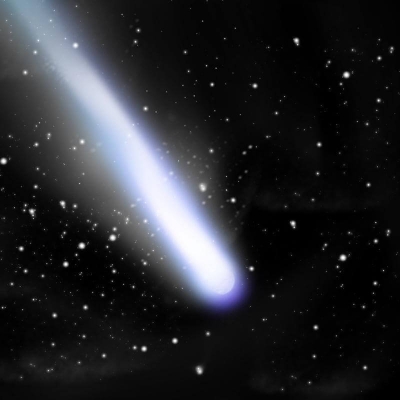
Like asteroids, comets are leftovers from the formation of our solar system, but they’re made of different stuff. Each is an irregular ball of icy slush, frozen gases, and dark minerals just a few miles or kilometers wide. Like planets, some comets orbit the sun on a predictable schedule. Halley’s Comet, the most famous of these weird wanderers, drops by Earth every 76 years or so (it’s not due for its next visit until July 2061)
When the comet gets near the Sun, the Sun’s heat warms it, causing the ices to sublimate (turn directly from ice into steam), releasing also dust and rock from the nucleus. This creates both the coma (a thin atmosphere) surrounding the nucleus as well as the tail of material that generally streams from the nucleus away from the Sun. The size of the coma is thousands, hundreds of thousands, and sometimes millions of kilometers wide and the tail can reach tens of millions of kilometers long. Once the coma and tail form, they outshine and hide the true nucleus.
Picture Credit : Google

